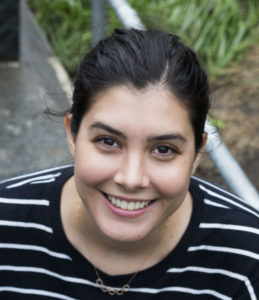This story is part of Covering Climate Now, a global journalism collaboration strengthening coverage of the climate story.
When Meleny Thomas first moved to South Baltimore, she thought the towering smokestack emblazoned with the city’s name was a welcome sign. She later learned what it really was: a trash incinerator releasing pollutants into her neighborhood.
The incinerator, known locally as the BRESCO plant, has become a flashpoint between city officials and locals, who say pollution from the plant is making them sick.
“I got a rude awakening when I found out what that welcome sign actually was, and how it was harming our environment and our residents,” said Thomas, executive director of the South Baltimore Community Land Trust (SBCLT).
BRESCO is one of about 75 trash-burning facilities across the United States; according to the Environmental Protection Agency (EPA), about 12 percent of all municipal solid waste in the United States is combusted for energy recovery.
A 2019 report from the New School found that almost 80 percent of the waste incineration plants in the U.S. are built in environmental justice communities—communities with predominantly minority or low-income residents. South Baltimore is home to several such neighborhoods.
“It is not an accident that our community is overburdened by all of these chemical pollutants and industries,” said Thomas.
When most of these plants were built in the 1980s and 1990s, the incineration industry presented itself as a cleaner, high-tech alternative to landfills, said Ana Baptista, associate director of the Tishman Environment and Design Center at the New School and one of the report’s authors.
But many of the pollutants produced by burning trash can be highly toxic, she said. The smoke and ash from burned waste routinely contains dioxins, a highly carcinogenic compound found in batteries and plastics, as well as particulate matter, which is linked to cardiovascular and respiratory illnesses, like asthma, she added.
“This industry definitely sells waste incineration as a win-win solution for sustainability, but if you’re an environmental justice community, a community of color or a low-income community that sits next to one of these facilities, it’s a lose-lose proposition,” says Baptista.
Jim Connolly, vice president of environmental compliance at WIN Waste Baltimore, the company that owns the incinerator, wrote in a statement to Nexus Media News that the facility “operates under stringent federal and state regulations designed to protect public health and the environment.”
He cited reports that waste-to-energy facilities, overall, are small contributors to local air pollution compared to other sources, like roadway vehicles. In addition to the BRESCO incinerator, South Baltimore is also home to a medical waste incinerator, an open-air coal pile and a series of chemical plants.
Thomas said she has seen the effects of pollution from these plants in her community first-hand. She shares stories of schools unable to field sports teams because too many children have asthma and neighbors dying of lung cancer.
“It creates a public health nightmare for residents who live near the facility,” said Sacoby Wilson, director of the Center for Community Engagement, Environmental Justice and Health at the University of Maryland. Burning trash releases heavy metals like lead, mercury and arsenic, he said.
Nearly one-third of the city’s high school students have been diagnosed with asthma, compared to 26 percent statewide, according to state health data. (Adults in Baltimore also suffer from asthma at higher rates than state and national averages.) A 2017 report by the Environmental Integrity Project found “strong spatial correlation” between asthma-related hospitalization (or emergency room visits) and demographic measures of poverty.
Thomas and other local leaders have been advocating for the city to close BRESCO completely. They suffered a major setback when, in 2020, outgoing Mayor Bernard Young extended the plant’s contract for 10 years.
So in early 2021, activists adopted a new plan: they would push the city toward a zero-waste model and starve the plant.
Composting has become a focal point of the efforts. “Composting is the alternative to trash incineration,” says Marvin Hayes, who runs the Baltimore Compost Collective, a local service that collects food scraps from five Baltimore neighborhoods. Over the summer, the city government rolled out a food scrap drop-off pilot program, allowing residents to drop organic waste off at one of five sites.
City officials estimate that food scraps make up 25 percent of the city’s waste stream, but Hayes believes that figure is closer to 30 or 40 percent. He wants to eventually divert all of that organic waste to compost.
Greg Sawtell, the director SBCLT’s Zero Waste Just Transition project, said the organization is working with the city and institutional partners to develop a community-owned composting facility on a 64-acre brownfield site in Curtis Bay. The site is slated to benefit from a new Maryland law, set to take effect in 2023, that will require organizations that generate more than two tons of food waste per week to either reduce or divert that waste from disposal to food rescue organizations, farms or composting (if there is a compost facility within 30 miles).
In addition to compost, Thomas wants to help develop the city’s reuse businesses and recycling and waste recovery facilities, providing jobs for Baltimore residents in the process. She pointed to a local organization called Second Chance that “unbuilds” homes and sells the building materials for reuse as an example. “That’s what we want to see more of in our city,” she said.
Zero-waste activists won a small victory in September after officials announced that the city would begin supplying all residents with free recycling bins. The rollout came after a report found Baltimore recycled less than 3 percent of its plastic, burned about 50 percent and landfilled the rest.
For all the rumblings of change, the activists pushing for a zero-waste Baltimore still face an uphill challenge. For the incinerator to truly starve, the plant’s biggest clients—not just local residents—would have to stop sending it high volumes of waste, Baptista said.
But Thomas and her fellow activists are undeterred. “We want an equitable system,” Thomas said, “a system that puts our lives first, and one that we can happily participate in, [knowing] we are helping our climate and our environment.”
Briana Flin produces videos for Nexus Media News, a nonprofit climate change news service. You can follow her @BrianaFlin. This story was produced in partnership with The Guardian. It was made possible by a grant from the Open Society Foundations
Jillian Mock is an independent journalist who covers climate change, environmental issues, medicine, and mental health.


